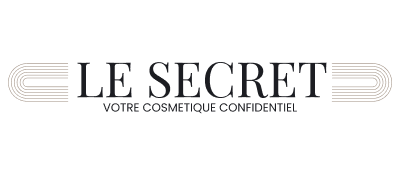
How Climate Change Affects Your Skin—and What You Can Do About It
Climate change is one of the most pressing challenges of our time. Beyond its environmental and societal impact, it also affects our health—and our skin in particular. As average temperatures rise and extreme weather events become more frequent, our skin, the body’s first protective barrier, is directly exposed to these environmental shifts.
As the largest organ in the body, the skin plays a critical role in defending us from external aggressors. But today’s evolving climate is putting tremendous strain on its natural capacity for adaptation and defense. Understanding these impacts—and knowing how to respond—has become essential to preserving your skin’s health and beauty over the long term.
Your Skin in a Changing Climate
An Organ on the Front Line
Your skin is not just a protective covering—it's a dynamic ecosystem constantly responding to its environment. Though it has built-in defense mechanisms, climate change subjects it to unprecedented stress:
-
More frequent and extreme temperature swings
-
Increased UV exposure due to ozone layer depletion
-
Rising air pollution levels
-
Unstable ambient humidity
-
More frequent heatwaves
How Climate Change Impacts the Skin
1. Disruption of the Skin Barrier
Sudden changes in temperature and humidity can compromise the skin’s lipid structure, weakening its barrier function. This leads to:
-
Increased transepidermal water loss
-
A fragile skin barrier
-
Greater sensitivity to external aggressors
-
An imbalanced skin microbiome
2. Increased Oxidative Stress
More intense UV rays and pollution boost free radical production, causing oxidative stress that:
-
Damages collagen and elastin fibers
-
Accelerates skin aging
-
Disrupts melanin production
-
Weakens skin’s natural defenses
3. Hydrolipidic Film Imbalance
Extreme climate shifts disturb the skin’s hydrolipidic film, leading to:
-
Excessive or insufficient sebum production
-
Acne or dry patches
-
Increased sensitivity
-
Redness and irritation
Direct Impacts of Climate on Skin Health
Temperature Swings: A Major Challenge
Increasingly abrupt seasonal changes—or even daily fluctuations—stress the epidermis.
In Winter Cold weather causes:
-
Blood vessel constriction, limiting nutrient delivery
-
Reduced sebum production
-
A weakened skin barrier
-
Heightened sensitivity
To protect your skin in winter, opt for rich creams with essential fatty acids and nourishing ingredients like shea butter.
In Summer Extreme heat can trigger:
-
Overproduction of sebum
-
Increased dehydration
-
Excessive sweating
-
A higher risk of dark spots
Choose lightweight yet deeply hydrating formulas with soothing agents like aloe vera and antioxidant protection.
The Growing Impact of Air Pollution
Pollution is no longer just an urban concern. Fine particle levels are rising globally due to both climate change and human activity—creating a direct threat to skin health.
Types of Pollutants and Their Effects
Fine Particles (PM2.5 and PM10)
These invisible particles:
-
Penetrate deep into pores
-
Suffocate the skin
-
Trigger inflammation
-
Accelerate premature aging
Nitrogen Oxides (NOx)
Mostly from traffic emissions, they:
-
Disrupt collagen production
-
Heighten skin sensitivity
-
Encourage dark spots
-
Undermine the skin’s natural defenses
Ground-Level Ozone
Especially prevalent during heatwaves, it:
-
Causes significant oxidative stress
-
Damages skin lipids
-
Dehydrates the skin
-
Speeds up cellular aging
How Pollution Attacks the Skin
-
Accumulates on the skin surface
-
Penetrates pores
-
Triggers oxidative stress
-
Leads to visible signs of aging
UV Radiation: More Intense Than Ever
With ozone layer thinning, UV rays are stronger—even in urban environments. The result:
-
Premature wrinkles
-
Pigmentation spots
-
Increased risk of long-term skin damage
Practical Solutions to Protect Your Skin
Boost Antioxidant Protection
To counter environmental stressors, strengthen your skin’s antioxidant defenses. Natural extracts like ginkgo biloba and green tea are excellent for neutralizing free radicals. A booster gel enriched with these actives creates a protective shield against oxidative damage.
Adapt Your Hydration to the Climate
Hydration needs vary by season:
-
In summer, opt for lightweight, hyaluronic acid–based formulas.
-
In winter, choose richer creams with plant butters like shea or cocoa to restore the skin barrier.
Nighttime Repair
Night is when the skin regenerates most effectively. Use nighttime treatments with reparative actives like collagen and peptides to rebuild the skin’s structure and improve elasticity.
Anti-Pollution Skincare Routine
Double Cleansing
Remove all traces of pollution:
-
First cleanse to lift surface impurities
-
Second cleanse to deeply purify the pores
Protective Actives
Use formulas that combine:
-
Natural antioxidants like bakuchiol
-
Multi-weight hyaluronic acids for deep-layer hydration
-
Protective peptides to fortify the skin barrier
Targeted Care for Sensitive Areas
Delicate zones like the eye contour need special attention. Use products enriched with soothing and protective actives for these vulnerable areas.
Adjust Your Routine With the Seasons
Spring–Summer
-
Lightweight textures
-
Increased UV protection
-
Focus on hydration and antioxidants
Fall–Winter
-
Richer, more nourishing formulas
-
Reinforce the skin barrier
-
Add reparative ingredients
Additional Protective Habits
-
Stay hydrated by drinking plenty of water
-
Limit exposure to sudden temperature changes
-
Avoid going out during peak pollution hours
-
Eat a diet rich in antioxidants
Conclusion
Climate change calls for a new, holistic approach to skincare. By understanding the challenges your skin faces—and adjusting your routine accordingly—you can help it stay balanced, healthy, and resilient.
Choose products that offer both protection and care—formulated with natural, effective ingredients that respect both your skin and the planet. Because taking care of your skin today also means protecting it for tomorrow.
